How To Grow Hollyhocks: Expert Tips For Summer Stunners
Learn how to grow hollyhocks for an old-fashioned, beautiful bright spot in your garden. Pollinators will thank you.
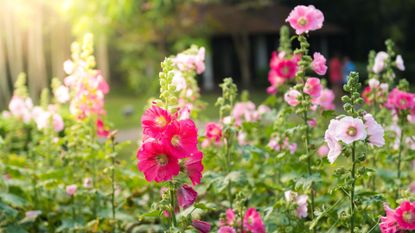

How To Grow Hollyhocks For Stunning Summer Blooms
Hollyhocks are a quintessential part of any cottage garden. Grown as a biennial, hollyhock plants are a favorite of pollinators and even serve as a host to painted lady butterflies. Though established beds require relatively little care, learning when and how to start the plant will be key to success. How do you grow hollyhocks?
QUICK FACTS
Botanical name: Alcea rosea
Height: 3-6 ft. (1-1.8 m.)
Spread: 12-24 in. (30-60 cm.)
Sun exposure: Full Sun
Soil requirements: Well-Draining
Hardiness zones: USDA Zones 3-8
Gardening tips, videos, info and more delivered right to your inbox!
Sign up for the Gardening Know How newsletter today and receive a free download of our most popular eBook "How to Grow Delicious Tomatoes."
When to plant: Spring, Mid-Summer
Caring for Hollyhocks
Lighting Conditions
To look their best, hollyhocks need plenty of direct sun. This means planting them into beds that receive at least 6-8 hours each day. Though they can tolerate some shade, excess shade may cause the plant to stretch or become leggy. Flowering can also be affected, resulting in the production of fewer or smaller blooms.
Temperature & Humidity
Hollyhocks perform well under a wide range of conditions. However, temperatures that are especially cool or hot may slow their growth and can affect their overall performance. Though hollyhocks can be grown in regions that experience high humidity, they may experience an increased susceptibility to disease.
Watering Needs
Routine watering through the summer helps to maintain consistent moisture in hollyhock beds. The plants should be watered from below, making certain to avoid the accidental wetting of leaves. This method, most often achieved through the use of drip irrigation or soaker hoses, helps to prevent common diseases.
Best Fertilizing
Hollyhocks are heavy feeders. This means that they benefit greatly from routine fertilization. Feed the plants every 6-8 weeks with a well-balanced, slow-release fertilizer that has been specifically formulated for use with ornamental plants.
Soil & Compost
Hollyhocks require a rich, fertile soil. Add some finished compost and other amendments at planting time. Provided their nutrient needs have been met, hollyhock plants are highly adaptable and can tolerate a wide range of soil types, including those that are alkaline or acidic.
How to Grow Hollyhocks From Seed
Before we can learn how to plant hollyhock seedlings, we’ll first need a better understanding of the plant’s needs for germination. Hollyhock seeds germinate readily and are planted in either spring or summer. Soaking seeds in warm water may help to speed germination, but it is not required. Seeds can be started indoors, in trays, but most find sowing directly into prepared beds to be the best option. You can expect hollyhock seeds to begin growing approximately 1-2 weeks from planting.
Hollyhock Support & Pruning
Hollyhocks have a long bloom period, with flowers slowly opening across each stem. Flowers can be pinched from the stem as each one fades. This helps prevent the production of seed and helps to keep the plants looking tidy. Another key component of learning how to plant hollyhocks is support. Often, tall plants will begin to bend or lean due to the weight of flowers or weather conditions. Hollyhocks can be trellised in a variety of ways, including the use of individual stakes, cages, and/or netting.
Problems, Pests & Diseases
Though beautiful, hollyhocks are affected by a wide range of diseases. Most notable among these are powdery mildew and rust. Both result from issues related to moisture and humidity. This makes using proper watering techniques and spacing vital to their prevention. Several nuisance pests like to frequent hollyhock plants. Hollyhock weevils, specifically, feed on all parts of the plant. Japanese beetles can also be a problem, causing extensive damage to flowers and foliage.
How to Propagate Hollyhocks
Hollyhocks are best propagated by seed. The process begins when flowers are pollinated. After several weeks, the seed pods will have started to dry. Mature seeds can be harvested from the plant at this time, but be certain to do so before the pod splits open. Once open, pods can drop large numbers of seeds into garden soil. This makes the hollyhock an ideal addition to self-seeding or low-maintenance flower beds.
Frequently Asked Questions
Do Hollyhocks Come Back Every Year?
Most hollyhocks are biennial. This means that they will produce foliage in their first season, returning only to bloom and set seed in their second. Some newer varieties will flower in their first year, behaving as an annual. Therefore, sowing new seed into the garden each season is required.
How Tall Do Hollyhocks Get?
Though there are some varieties of dwarf hollyhock, most grow to be relatively tall. You can expect dwarf plants to reach approximately 12-36 in. (61-91 cm) at maturity, with more traditional types growing to around 3-6 ft. (1.0-1.8 m) in height.

Heather Rhoades founded Gardening Know How in 2007. She holds degrees from Cleveland State University and Northern Kentucky University. She is an avid gardener with a passion for community, and is a recipient of the Master Gardeners of Ohio Lifetime Achievement Award.
-
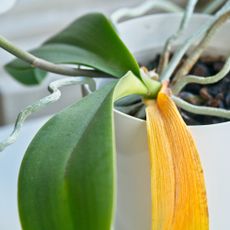 Orchid Leaves Turning Yellow: Common Causes And Remedies
Orchid Leaves Turning Yellow: Common Causes And RemediesYellow orchid leaves are a frequent cause of concern for indoor gardeners. Discover how to diagnose the issue, and restore your plant to full health.
By Melanie Griffiths
-
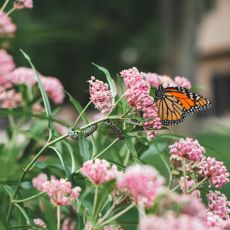 Pollinator Garden Certification Guide: Turn Your Yard Into An Official Pollinator Preserve
Pollinator Garden Certification Guide: Turn Your Yard Into An Official Pollinator PreserveYou can get a pollinator garden certification by making your yard or garden a safe haven for pollinators with food, water and shelter.
By Mary Ellen Ellis
-
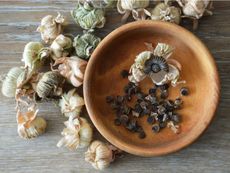 When And How To Harvest Hollyhock Seeds
When And How To Harvest Hollyhock SeedsWant to know how to harvest and collect hollyhock seeds? Click here to learn everything there is to know.
By Tonya Barnett
-
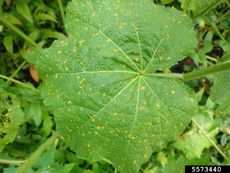 Treating Hollyhock Leaf Spot – Learn About Hollyhock Leaf Spot Control
Treating Hollyhock Leaf Spot – Learn About Hollyhock Leaf Spot ControlHollyhocks can be plagued by leaf spot diseases. Sanitation and proper irrigation generally keep the disease in check. Click here for more info.
By Mary H. Dyer
-
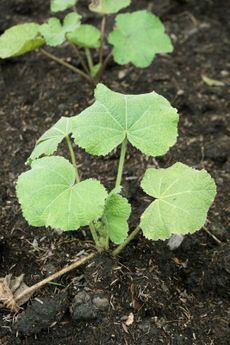 Hollyhock Pest Control: Are Hollyhock Nematodes Good Or Bad
Hollyhock Pest Control: Are Hollyhock Nematodes Good Or BadYour hollyhocks are stunted with poor flower production. They wilt easily and look yellowish. You're not sure why they’re are failing. Perhaps, it's because the trouble lies under the soil. You may have hollyhock nematode problems. This article can help with that.
By Laura Miller
-
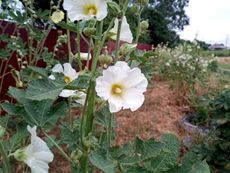 Hollyhock Anthracnose Symptoms: Treating Hollyhock With Anthracnose
Hollyhock Anthracnose Symptoms: Treating Hollyhock With AnthracnoseAnthracnose is one of the most destructive diseases of hollyhock plants. To learn about symptoms and management, click here.
By Mary Ellen Ellis
-
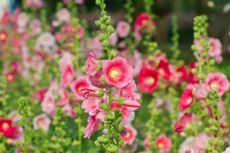 Hollyhock Flower Removal: Do Hollyhocks Need To Be Deadheaded
Hollyhock Flower Removal: Do Hollyhocks Need To Be DeadheadedHollyhocks are the showstoppers of the flower garden with towering blooms. To make the most of these gorgeous flowers, know how best to care for them. Do hollyhocks need to be deadheaded? Yes. Learn more in this article.
By Mary Ellen Ellis
-
 Hollyhock Rust Treatment: How To Control Hollyhock Rust In Gardens
Hollyhock Rust Treatment: How To Control Hollyhock Rust In GardensIf you've ever grown hollyhocks in a hot humid climate, you've probably seen its leaves with yellow spots on top and reddish-brown pustules on the undersides that indicate hollyhock rust. Find out how to control hollyhock rust in this article.
By Jackie Carroll
-
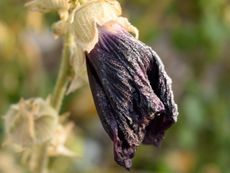 Hollyhock In Winter: How To Winterize Hollyhock Plants
Hollyhock In Winter: How To Winterize Hollyhock PlantsHollyhocks die back in winter, but you still need to protect the roots. Discover how to winterize hollyhock in this article so you can continue to enjoy their blooms next season.
By Bonnie L. Grant
-
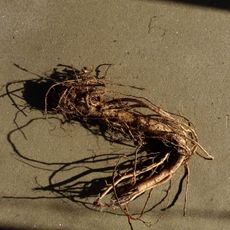 Bare Root Hollyhock Plants: Tips For Planting Hollyhock Roots
Bare Root Hollyhock Plants: Tips For Planting Hollyhock RootsGrowing hollyhocks in a sunny garden makes a statement. Planting hollyhock roots is the best way to start this large and attractive flower. Get tips on how to grow bare root hollyhocks in this article.
By Becca Badgett